Head On blog

By Danny James
•
June 30, 2024
If you're interested in building a website, you've no doubt come across a sea of new AI, build-your-site-in-seconds ads. So you're probably wondering, 'Do I even need someone to design my website for me now?' That's a reasonable question, as these ads are very compelling, so lets take a look.. Embracing Technological Advancements In recent years, technology has advanced at a breakneck speed, and artificial intelligence (AI) has been at the forefront of this revolution. AI tools have permeated various aspects of our lives, from personal assistants like Siri and Alexa to advanced algorithms driving our cars and diagnosing medical conditions. One of the most exciting applications of AI is in the realm of website building . AI-powered instant website builder platforms promise to create beautiful, functional websites in mere minutes, requiring minimal input from the user. They offer a seemingly magical solution for small business owners, entrepreneurs, and even hobbyists looking to establish an online presence without the hassle of learning to code or hiring a professional developer. The Creativity Conundrum While AI website builders provide an impressive starting point, they are far from the complete solution. As technology evolves, a concerning trend has emerged: websites generated by these platforms often look and read very similarly. This uniformity is a direct consequence of the templates and pre-written content these tools rely on. For small businesses, having a unique voice and personalised content is crucial. AI-generated copy, although grammatically correct and coherent, can lack the nuanced touch that truly represents a brand's personality and values. Small businesses thrive on their ability to connect with their community and customers in a genuine, human way. A bespoke website , crafted with careful attention to the business's unique voice and style, can make a significant difference in standing out in a crowded digital marketplace. The Hidden Cost of Code Bloat Another critical issue with AI-generated websites is the hidden inefficiency in their underlying code. These platforms often prioritize ease of use and rapid deployment over code optimization. The result is code bloat – an excess of unnecessary or redundant code that can slow down website performance. Slow loading times can frustrate users and negatively impact search engine rankings, driving potential customers away before they even have a chance to explore what the business has to offer. In contrast, a bespoke website, designed and developed specifically for a business's needs, can be finely tuned for performance. It ensures that every element serves a purpose, contributing to a smooth and efficient user journey. This focus on optimisation can enhance user experience, improve engagement, and ultimately lead to better business outcomes. Conclusion: Striking the Right Balance As we look to the future, it's clear that technology will continue to play a pivotal role in shaping our lives and businesses. AI tools, including instant website builders, are valuable assets that can save time and simplify complex tasks. However, they should be viewed as tools – helpful aids in the hands of skilled professionals, not replacements for human creativity and expertise. We are not yet in a world where we can sit back and let robots handle all our tasks, freeing us for endless leisure. Instead, we must strive to use technology wisely, balancing automation with the irreplaceable value of human insight and creativity. The robots may not be arriving from the future with mechanical minds set on our destruction, but neither are they ready to run our businesses for us. By leveraging AI as a supportive tool rather than a crutch, we can create vibrant, unique online presences that truly represent our businesses and connect with our audiences in meaningful ways. Looking for a beautiful new website that will get you leads? Get in touch today

By Danny James
•
July 24, 2022
When it comes to SEO , there isn't a magic formula to instantly send your site off to the #1 search result on Google. But there are some basic principles you should follow for a wonderful starting point. Here are the top 5 SEO practices to start with: #1 Write for people, not for search engines Always write original, interesting, high quality site content that's error free and relevant to your site. Search engines like Google can easily detect content that is duplicated from elsewhere online, that contains grammatical errors, or that is stuffed with keywords. #2 Add a blog to your site and use rich media To engage your site visitors and blog readers, create posts that include non-textual media like photos, videos, or original visualizations (infographics). Having that extra content (especially if it's captivating) will increase the time users spend on your site as well as the likelihood they will share your site with their own community. #3 Offer a positive user experience throughout your site Google will know if you're using your site to aggressively advertise your service, or if you're being too pushy. Always aim to offer site visitors a pleasant experience on your site. That means clear content, support when needed, and always an option to go back. #4 Create a network of internal links (but don't overdo it) Add links between different pages of your site and your blog, but try to follow a process that feels organic rather than heavy linking meant just for search engine crawlers. Link between pages that make sense, for example, on your services page, link a certain industry specific term, and link it to a blog post you wrote about it, that gives more information on that term. #5 Always check your site's Core Web Vitals Core Web Vitals are a standard site performance standard initially created by Google. The report shows site owners how their site pages perform 'for real,' how long it takes for site visitors to load site pages, and it offers ways to fix issues, if there are any. Need an expert to review your site and give you a plan for ongoing organic traffic growth? Get in touch

By Danny James
•
June 29, 2022
Branding makes a huge impact on how you're seen as a business, it can evoke emotion, create a mental image of who you are and consistent and correct use can see you gain an advantage over your competitors with just organic reach. Why SEO Loves Branding: The Power of Consistency in Building Online Success The Symbiotic Relationship Between SEO and Branding In the ever-evolving digital landscape, search engine optimization (SEO) and branding often get treated as separate entities. However, savvy marketers know that these two components are intrinsically linked, each bolstering the other in powerful ways. SEO focuses on making your website visible to search engines and, by extension, potential customers. Branding, on the other hand, is all about creating a distinct identity that resonates with your audience. When these two elements work together harmoniously, the results can be extraordinary. Strong branding not only enhances your SEO efforts but also ensures that your message cuts through the noise, fostering a loyal and engaged audience. The Importance of Consistency Consistency is the cornerstone of effective branding. When your brand's message, tone, and visual identity are uniform across all platforms, it creates a cohesive and memorable experience for your audience. This consistency is crucial not just for brand recognition, but for SEO as well. Search engines favor websites that offer a seamless user experience, and a consistent brand presence is a key component of this. Whether a potential customer encounters your brand on your website, through social media, or via email marketing, the experience should be unmistakably you. This uniformity helps in establishing trust and credibility, making visitors more likely to return and engage with your content, thereby boosting your site's ranking in search engine results. The Role of Branding in User Engagement A strong brand encourages user engagement, which is a critical factor in SEO . When users spend more time on your site, interact with your content, and share it with others, search engines take notice. These behaviors signal that your site provides valuable information, leading to higher rankings. Consistent branding helps in creating a recognizable and relatable identity that keeps visitors coming back. It's not just about having a logo or a catchy tagline; it's about the overall experience your brand offers. High-quality content that aligns with your brand’s voice, regular updates, and active social media presence all contribute to a more engaged and loyal audience. This loyalty translates into lower bounce rates, higher dwell times, and more inbound links – all of which are music to the ears of any search engine algorithm. Building a Strong Connection Through Messaging Your brand's messaging is the narrative that ties everything together. It's how you communicate your values, your mission, and what sets you apart from the competition. This narrative needs to be consistent across all touchpoints. When your messaging is aligned, it reinforces your brand’s identity and makes it easier for customers to understand and connect with you. This connection is essential for creating a strong brand recall, which in turn supports your SEO efforts. Think about it: if a user remembers your brand and searches for it directly, that’s a clear signal to search engines that your brand is reputable and relevant. This direct traffic can significantly boost your site’s authority and improve its ranking. Conclusion: The Path to Digital Success In the digital age, the symbiosis between SEO and branding cannot be overstated. Consistent branding across your website, social media, and other platforms creates a unified and memorable experience that keeps your audience coming back. This repeat engagement not only strengthens the connection between your brand and your customers but also sends positive signals to search engines, enhancing your site’s ranking. As technology continues to evolve, maintaining a strong, consistent brand presence will be key to standing out in a crowded marketplace. By integrating your SEO strategies with a robust branding approach, you can create a powerful online presence that drives traffic, fosters loyalty, and ultimately, achieves digital success. So, remember: while SEO may be the science of being found, branding is the art of being remembered. Together, they can elevate your business to new heights. Need some help with digital marketing or SEO to boost your online presence? Get in touch today

By Danny James
•
June 29, 2022
What is SEO Anyway? Unpacking the Mystery of Search Engine Optimization Understanding SEO: Beyond the Basics If you’re a business owner with an online presence, chances are you’ve heard the term “SEO” thrown around a lot. Maybe you've even received emails claiming that your website "looks great but isn't being found on Google." These emails are often spammy and can be safely ignored, but they touch on a common concern: visibility. While many people understand SEO as a way to get their website to the "top of Google," the reality is that SEO, or Search Engine Optimization, is much more complex and nuanced than just ranking high on search engines. The Essence of SEO: People First At its core, SEO is about making your website work well for people. It’s easy to get caught up in the technical aspects and algorithms, but ultimately, SEO aims to improve user experience. A well-optimized site meets the needs of visitors by providing relevant information, easy navigation, and a pleasant browsing experience. When users find what they’re looking for quickly and efficiently, they’re more likely to stay on your site, engage with your content, and convert into customers. Search engines like Google prioritize user experience. They use sophisticated algorithms to evaluate and rank websites based on how well they serve their visitors. This means that focusing on people first – by creating valuable content, ensuring your site is easy to navigate, and making sure it loads quickly – is a fundamental aspect of SEO. The more user-friendly your site is, the better it will perform in search engine rankings. The Technical Side of SEO: Fun for Geeks, Daunting for Others While the human aspect of SEO is vital, there's also a significant technical component that can't be ignored. Technical SEO involves optimizing your website's infrastructure so search engines can easily crawl and index your content. For many business owners, the technical side of SEO can seem overwhelming, but for SEO enthusiasts, it’s a fascinating puzzle to solve. Here’s a starter list of technical SEO checks that are essential for any website: Site Speed: Ensure your website loads quickly. Slow sites frustrate users and are penalized by search engines. Mobile-Friendliness: Your site should be easily accessible and navigable on mobile devices. Secure Sockets Layer (SSL): Implement HTTPS to secure your website and protect user data. Crawl Errors: Use tools like Google Search Console to identify and fix errors that prevent search engines from indexing your site. XML Sitemap: Create and submit an XML sitemap to help search engines understand your site structure. Robots.txt: Optimize your robots.txt file to control how search engines crawl your site. Canonical Tags: Use canonical tags to prevent duplicate content issues. Structured Data: Implement schema markup to help search engines understand your content and provide rich results. Meta Tags: Optimize title tags and meta descriptions to improve click-through rates from search engine results pages. Broken Links: Regularly check for and fix broken links to ensure a smooth user experience. These technical elements, while often overlooked by non-specialists, play a crucial role in ensuring that your website is both user-friendly and search engine-friendly. Conclusion: Balancing User Experience and Technical Excellence SEO is about much more than just a beautiful website or appearing at the top of search engine results. It’s a comprehensive strategy that involves both understanding and serving the needs of your visitors while also adhering to the technical requirements set by search engines. At its simplest, SEO is about making your site work well for users – because when people have a positive experience on your site, search engines take notice and reward you with higher rankings. We might feel bound by the whims of Google’s ever-changing algorithms, but the golden rule remains: put humans first. By focusing on creating valuable, user-centric content and maintaining a technically sound website, you can achieve lasting SEO success. Remember, a great SEO strategy is not just about pleasing the algorithms; it’s about providing a seamless, enjoyable experience for your visitors. When you get that right, the search rankings will follow.

By Danny James
•
June 29, 2022
Why Do I Need a Marketing Plan? Keeping Up with the Competition In today's fast-paced digital world, having a well-thought-out marketing plan is more crucial than ever. One primary reason is simple: others are doing it. Your competitors are actively planning and executing their marketing strategies, and if you’re not doing the same, you risk falling behind. A marketing plan helps you stay competitive by ensuring that you are consistently reaching out to your potential customers and engaging them in meaningful ways. It’s not just about being visible; it’s about being strategically visible where it matters most. Harnessing the Power of Modern Tools The good news is that creating and managing a marketing plan has never been easier, thanks to the myriad of tools available today. From social media scheduling platforms to email marketing services and analytics tools, you have everything you need at your fingertips. These tools not only make it easier to execute your marketing strategies but also provide valuable insights into what’s working and what’s not. This means you can continuously refine and optimize your efforts to achieve better results. With the right tools, you can automate repetitive tasks, track your progress, and stay organized, making your marketing efforts more efficient and effective. Being There for Your Customers Your potential customers are everywhere – on social media, browsing websites, checking their emails, and watching videos, at all times of the day and night. A solid marketing plan ensures that you are present wherever and whenever they need you. This multi-channel approach maximizes your chances of reaching your audience, no matter where they are or what time it is. By being consistently present across different platforms, you increase your brand’s visibility and stay top of mind for your customers. This constant presence is key to building a strong relationship with your audience and turning potential leads into loyal customers. Telling a Compelling Story One of the most powerful aspects of a well-crafted marketing plan is its ability to tell a compelling story across various media. People are naturally drawn to stories, and a cohesive narrative can make your brand more relatable and memorable. By consistently communicating your brand’s story across different platforms, you create a unified message that resonates with your audience. This storytelling approach helps you connect with your customers on an emotional level, making them more likely to engage with your brand and become advocates. A marketing plan ensures that your story is told consistently and compellingly, creating a strong brand identity and fostering deeper connections with your audience. The Power of Repetition Repetition is a key element of effective marketing. Whether it’s reinforcing your brand message or promoting special offers, repeating your message across different platforms helps to ensure it sticks in the minds of your audience. A marketing plan helps you to strategically schedule and repeat your messages, so they are seen multiple times by your target audience. This repetition not only helps in building brand recognition but also in driving action. When your audience repeatedly sees your special offers or compelling messages, they are more likely to take notice and act upon them. Creating Urgency Creating a sense of urgency is a powerful marketing tactic that can drive immediate action. Whether it’s a limited-time offer, a flash sale, or a countdown timer, urgency creates a fear of missing out (FOMO) that can compel your audience to act quickly. A marketing plan allows you to strategically incorporate urgency into your campaigns, making your offers more compelling and increasing your conversion rates. By planning out these urgent messages in advance, you can ensure they are well-timed and effectively communicated, maximizing their impact. Engaging Your Audience Finally, a marketing plan helps you create opportunities for your audience to engage with your brand and become part of your story. Engagement can take many forms – likes, shares, comments, reviews, or even direct messages. By encouraging interaction, you make your audience feel valued and involved in your brand’s journey. This engagement not only builds a sense of community around your brand but also provides valuable feedback that you can use to improve your products and services. A well-executed marketing plan ensures that you are consistently creating opportunities for your audience to engage with your brand, fostering loyalty and long-term relationships. Conclusion: The Blueprint for Success In conclusion, a marketing plan is not just a nice-to-have; it’s a must-have in today’s competitive landscape. It helps you stay ahead of the competition, leverage powerful tools, be present for your customers, tell a compelling story, and strategically use repetition and urgency to drive action. Most importantly, it creates opportunities for meaningful engagement with your audience. By investing in a well-crafted marketing plan, you set your brand up for long-term success, ensuring that you are not just reaching your audience, but connecting with them in meaningful ways. So, take the time to develop a comprehensive marketing plan – your business will thank you for it.
“I adore my website. If I have any questions, updates or issues they're fixed in record time. "
Rosie Talbot
2022

“We commissioned a new website to reach more customers, and we're very pleased with the results."
Jak in the Locks
6 months ago

Speak to us about your digital marketing needs today
© 2025
Head On Creative Copy & Design
Website design by head on creative copy and design ©

